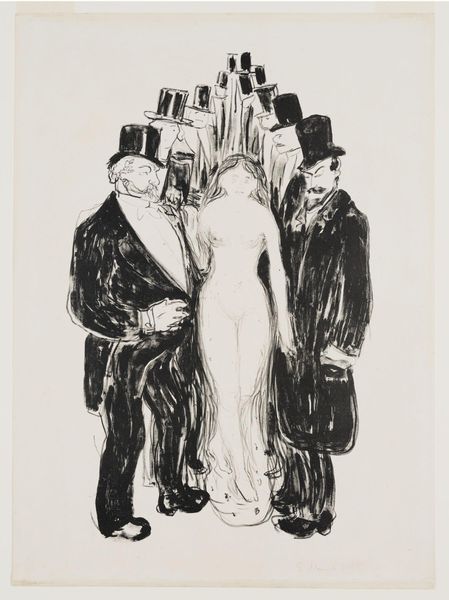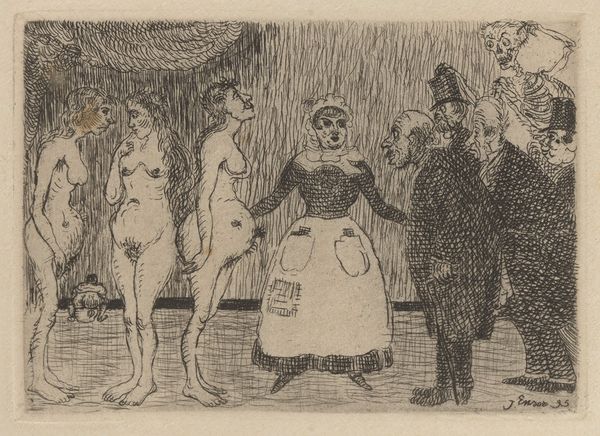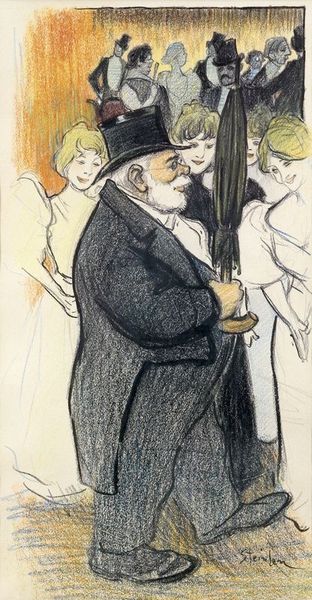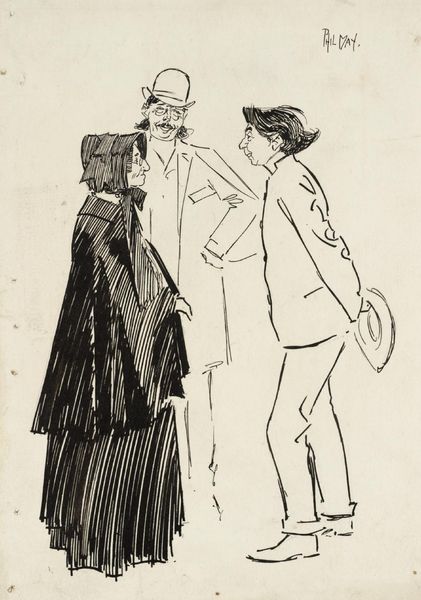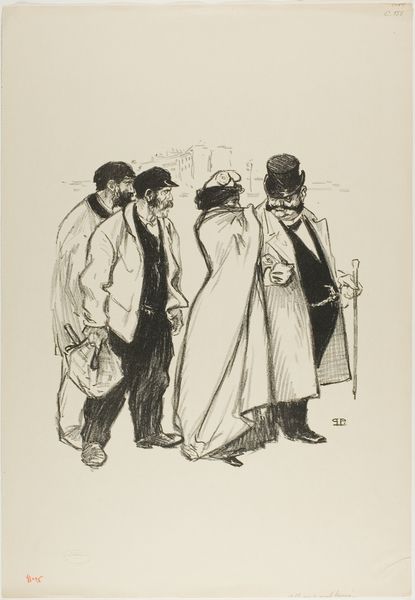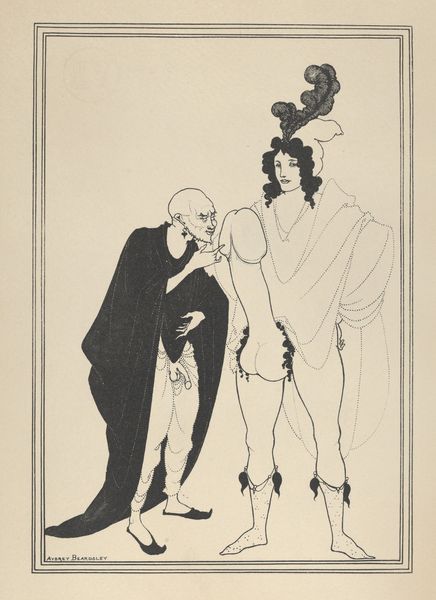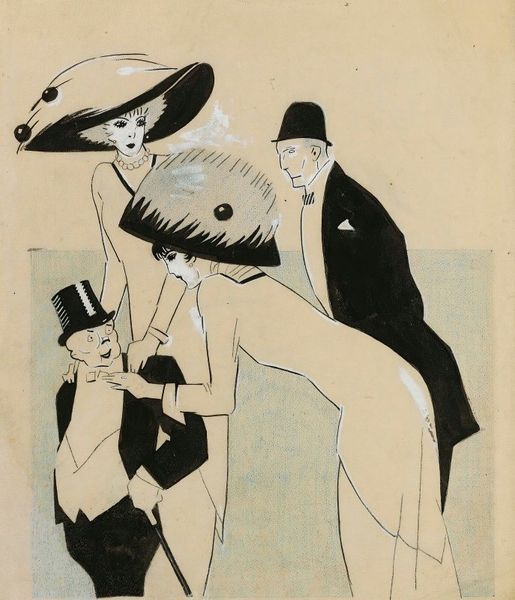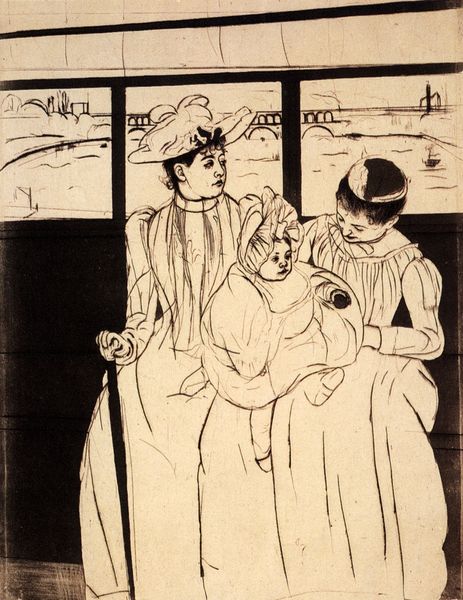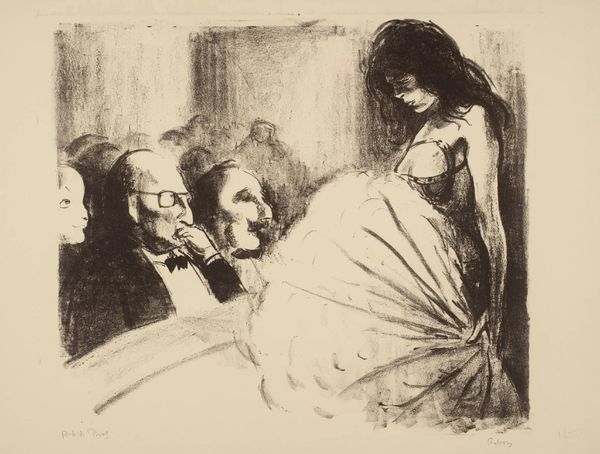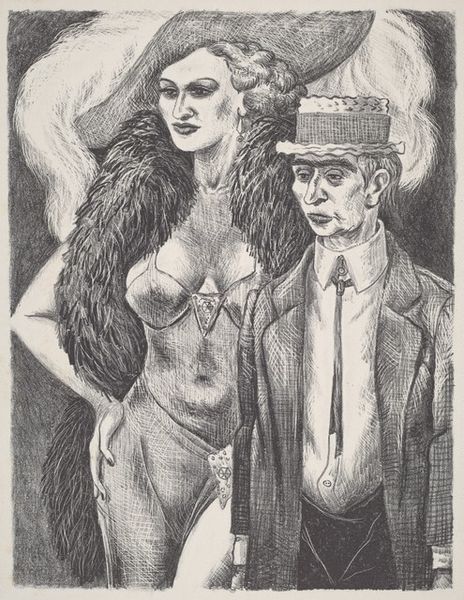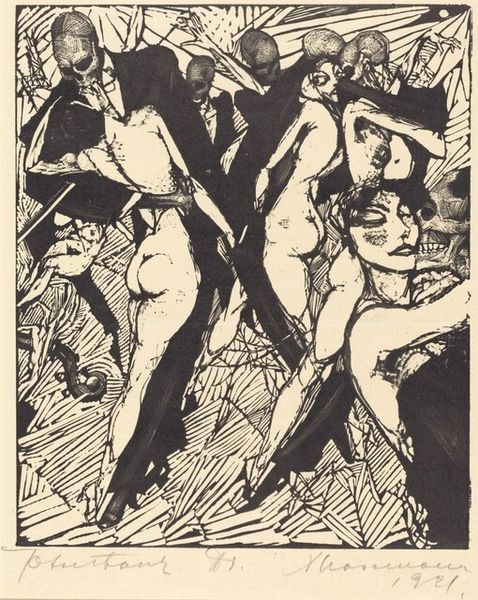
Copyright: Public Domain: Artvee
Editor: Here we have Edvard Munch's "The Alley," a pencil and charcoal drawing from 1985. It's stark; the contrast is pretty severe between the figures and the ground. What's striking to me is the faceless woman surrounded by these imposing men in top hats. How do you interpret this work through a formalist lens? Curator: I see a potent interplay of lines and forms meticulously arranged to evoke a specific sensation. The dramatic contrast between the heavy, dark charcoal strokes defining the men and their attire and the delicate, almost ethereal lines rendering the woman creates a visual hierarchy. Notice how the composition guides your eye—the rigid verticality of the men is disrupted only by their hats and her central, vulnerable form. The lack of detail in her face, compared to the comparatively detailed faces of some of the men, further emphasizes this dichotomy. How do you feel the contrast plays on this reading of it? Editor: I think the contrast contributes to a feeling of objectification. She's essentially erased while they are powerfully present. Does that erasure through form itself signify a meaning? Curator: Precisely. Formalism acknowledges that meaning is generated through the artwork's inherent visual elements. Semiotics tells us that this absence of detail signifies her lack of agency within this… "Alley." Her body, rendered in such delicate lines, becomes a signifier for vulnerability and exposure, further emphasizing the imbalance of power represented by the heavy, looming figures. The hatching and cross-hatching further add to the oppressive, dense texture of their forms versus the openness of her figure. Editor: That makes so much sense. I never considered how much the varying application of line work contributed to that oppressive feeling. Curator: Considering also the use of scale, those men are not huge. Yet by placing her forward, as you suggested, she almost appears trapped in the composition itself! Editor: Thank you! Looking at the relationship between the elements, and setting aside history, really spotlights what's at play with form and technique alone. Curator: Indeed. Focusing on composition enables us to reveal its structures. It brings forward an analytical process based not just on content, but of visuality and our perception of that.
Comments
No comments
Be the first to comment and join the conversation on the ultimate creative platform.
